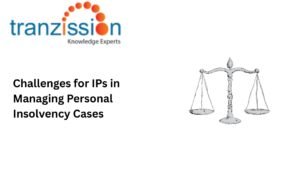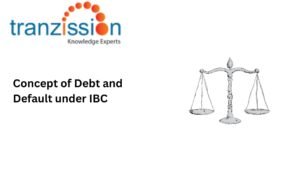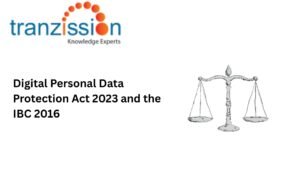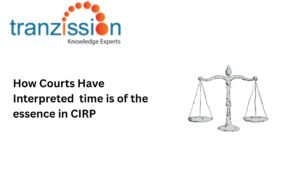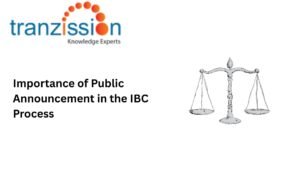
What are the implications of insolvency for suppliers and customers?
Table of Contents
Companies will go through the insolvency process only when they are under financial duress. In today’s industry this has become often due to the effects of trade disputes, social disruptions, political uncertainties, etc, and not only because of bad management. Insolvency risk is the possibility that a company may be unable to meet its payment obligations in a defined period. Your company can face two types of insolvency risk insolvency for suppliers and customers. Having an understanding of the implications of insolvency, a company can look out for indications of this risk and plan its future steps with the assistance of a professional to ensure that the resolution process is successful.
What is Supplier Insolvency Risk?
The risks related to supplier insolvency risk are more indirect than customer insolvency risk. Suppliers cannot deliver materials on time the company’s production will decline. Liquidity risk and credit risk are two forms of financial risk that a company faces. Credit risk is the degree to which companies can pay their debts on time. Liquidity risk is when companies fail to convert their assets into cash on time, which results in the company being unable to pay their debts on time.
Read more: How do stakeholder influence the insolvency resolution process
What is Customer Insolvency Risk?
Companies are highly reliant on the demand and supply chain. Even if suppliers are doing their due diligence, the financial stability of the company is also dependent on the customers. For customers making payments late or they have stopped making payments, the company’s cash flow is at risk. By maintaining a strong relationship with their customers, companies will be able to maintain their financial health. When customers fail to make their payments or delay payments, companies have an increase in unpaid receivables and affecting their cash flow.
The Impact of Supplier Insolvency
Losing a supplier to insolvency will have a negative outcome. It can disrupt production, either slowing it down or stopping it completely, this makes it difficult for the company to finish current projects or orders to meet specific targets. Companies may face an increase in costs because they have to find new suppliers that may not offer suitable prices or credit terms. Finding new suppliers in a short period will eventually impact the cash flow of the company. Not to mention that it is inefficient during supplier transitions.
The Impact of Customer Insolvency
Discuss the potential consequences of losing a customer, including Revenue loss
Increased bad debt and write-offs, cash flow disruptions, and strain on resources and operations
Warning Signs of Supplier Insolvency
Early warning signs do not mean that the organization will fail, but the earlier you detect certain warning signs, the stronger evidence of financial distress. This may include:
- Struggling to manage cashflow
- Lack of accurate cash-flow forecasts and incomplete budgeting methods
- Loss of customers and employees
- Issues in selling stock, poor credit management, or struggling to collect debts
- Inability to generate funds or interest from shareholders
Warning Signs of Customer Insolvency
Customer insolvency is easier to detect than supplier insolvency, by certain indicators such as:
- Delay in making payments
- There has been a drop in the volume of orders
- Increasing debt that will become unsustainable
- The customer may avoid any communication from the company
- Inconsistency in the customer’s financial documents
Sectors with Higher Supplier Insolvency Risk
Sectors that are completely dependent on suppliers are exposed to a higher insolvency risk, for instance:
- Construction Industry: Companies that handle suppliers in the construction domain rely on many specialist trades, leasing to long and complex chains. If even one of the companies is insolvent, the business operations of the company that is reliant on such a supplier are disrupted, and it becomes difficult to get back on track. In due course, the company will have cash flow difficulties and are at risk of being insolvent themselves.
Sectors with Higher Customer Insolvency Risk
While all companies are susceptible to insolvency risk due to the actions of their customers, certain sectors are more vulnerable, such as:
- Wholesale and retail: The wholesale and retail industry connects many companies in a single business transaction. The consumers question the reputation of the company, they will stop investing in their products, decreasing the output of sales of the company. Hence, the overall profit of the company declines and struggles to stay afloat.
- Hospitality and Tourism: This sector is a non-essential industry, and customers may not take part in such activities when they are facing financial issues. Such companies are also reliant on the time of the year, such as holidays and the weather, as well as their reputation. If customers do not trust the company’s establishment, they are less likely to participate in accommodation and food service activities
Strategies for Managing Supplier Insolvency Risk
Supplier insolvency risk management involves attempting to minimise the chance of losing companies in the supply chain to insolvency. Certain strategies to manage supplier insolvency risk are:
- Companies must verify the legitimacy of suppliers to avoid any delayed production.
- The supplier must have a clear picture of the company’s expectations and business terms regarding payment, delivery, and returns, including potential points of conflict.
- Companies should contact the existing customers of the suppliers to measure the credibility of the supplier.
- Go to the supplier’s website, if any, and other online platforms to find out their directors and which other companies they are linked to. It is advised to avoid working with businesses where the directors have a fixed charge over the business or those that have late or delayed accounts.
- By requesting sample products, companies will be able to check the quality of products from the supplier. The company will also have an idea of how the business operates.
- Assessing the supplier’s proposal will ensure that the supplier has understood the company’s requirements and they were able to draft a proposal to the unique needs of the company.
- Checking the Ministry of Company Affairs website, the company will be able to see the supplier’s current financial state. By doing so the company will be able to make more informed decisions on the level of their insolvency for suppliers and customers risk.
- It is crucial for companies to know that working with customers or clients does not mean that there is no insolvency for suppliers and customersrisk. The company must check the supplier’s accounts, balance sheet, or financial risk scores at regular intervals.
Strategies for Managing Customer Insolvency Risk
Managing customer insolvency risk, companies should adopt measures to mitigate this risk by:
- Companies should look into the creditworthiness of the customers to check their current financial health.
- By setting clear payment terms, companies can ensure that they will receive payments from their customers.
- Look into references and any other relevant information about the customer to check their financial stability.
- By building strong relationships with customers, companies can negotiate payment plans, their reputation with other companies, etc. and avoid insolvency for suppliers and customers risk.
- Diversifying the customer base for a company can assist them in mitigating the risk if one customer becomes insolvent.
- By staying informed about market conditions like economic factors or disruptions in the industry, companies can predict the behavior of the company and plan their actions accordingly.
- If the company does face customer or insolvency for suppliers and customersrisks, to reduce the impact on its business operations, companies should develop contingency plans.
Conclusion
insolvency for suppliers and customers protection has no straitjacket approach as it exists outside the company’s control. The first sign of insolvency risk is declining profitability and declining capitalization. Supplier insolvency risk is usually indicated by cash flow and liquidity problems, while customer insolvency risk is shown by delay in making payments for transactions. By identifying the warning signs, regardless of insolvency for suppliers and customers, the company may be able to mitigate the risk, preserve cash flow, and help the business grow.

